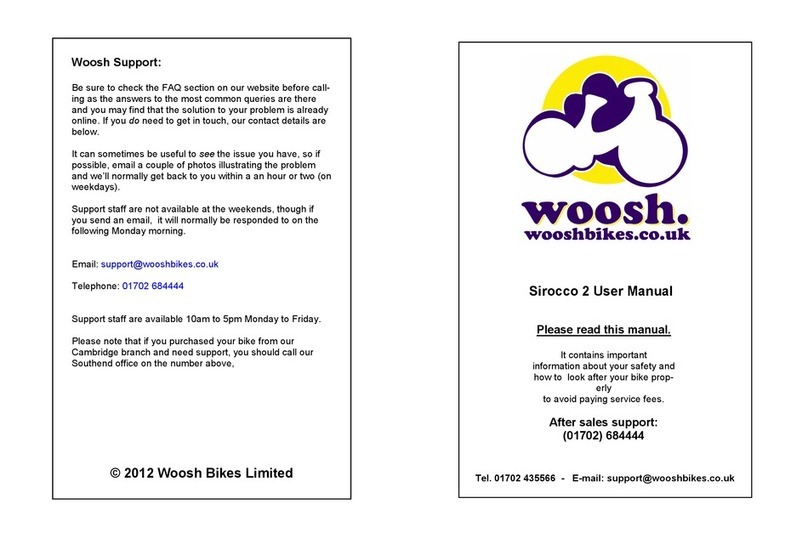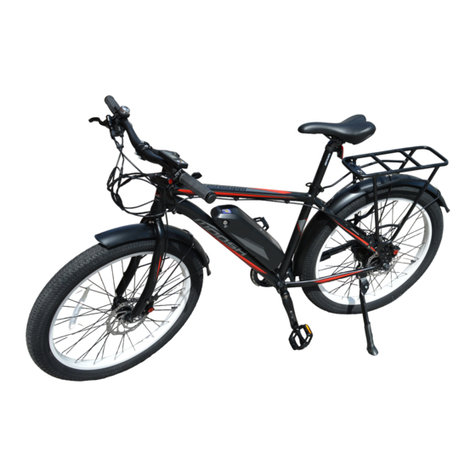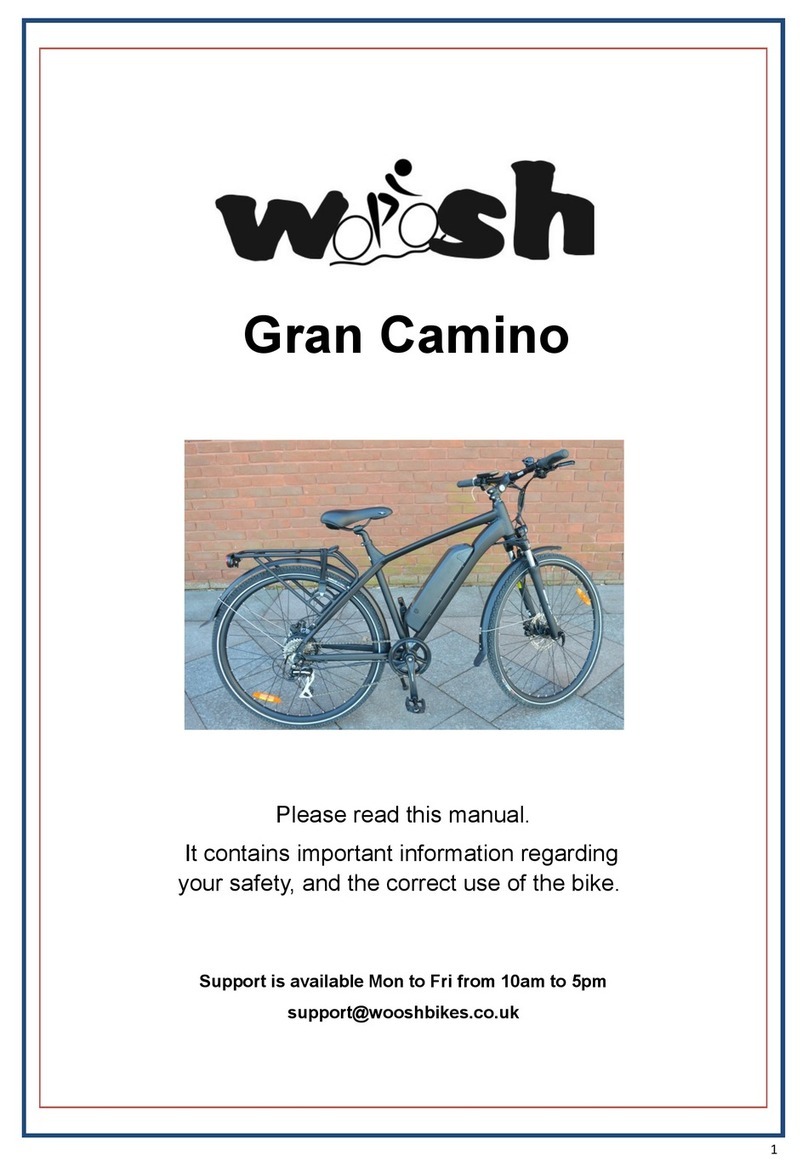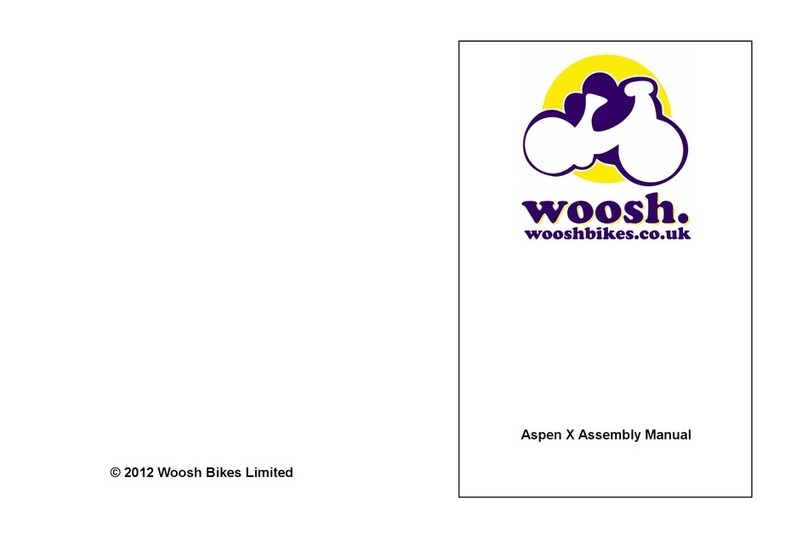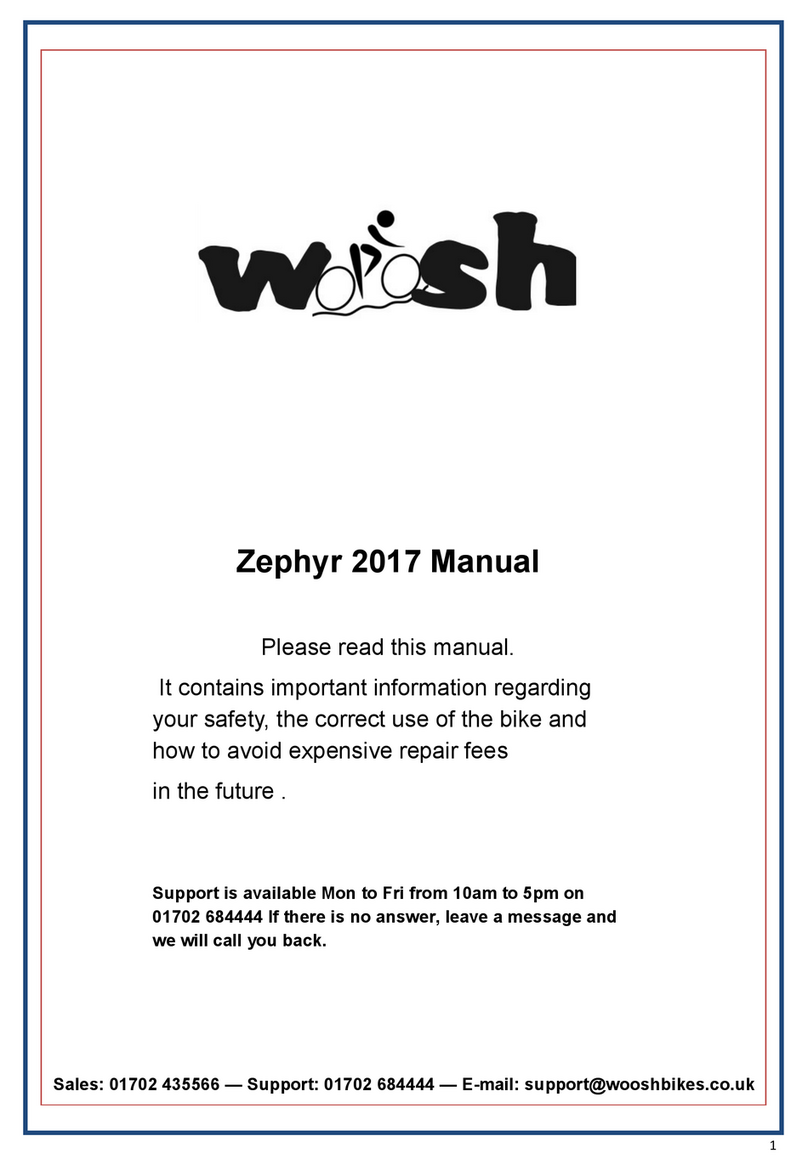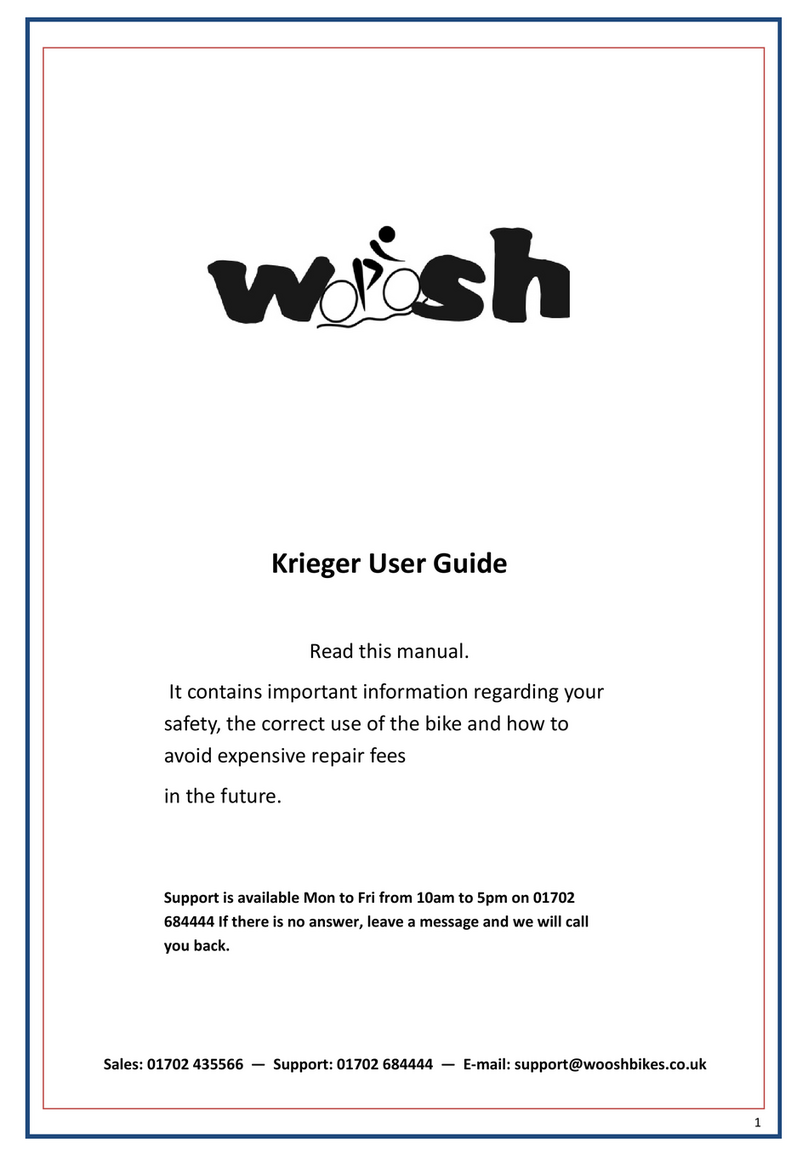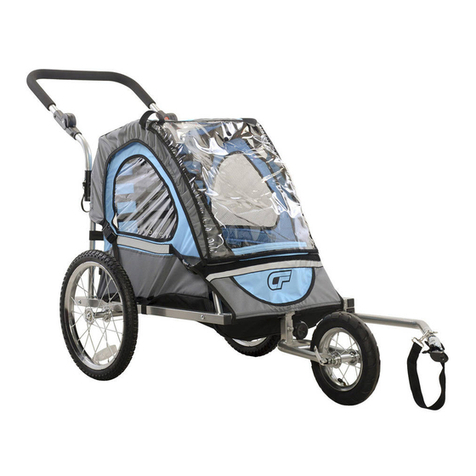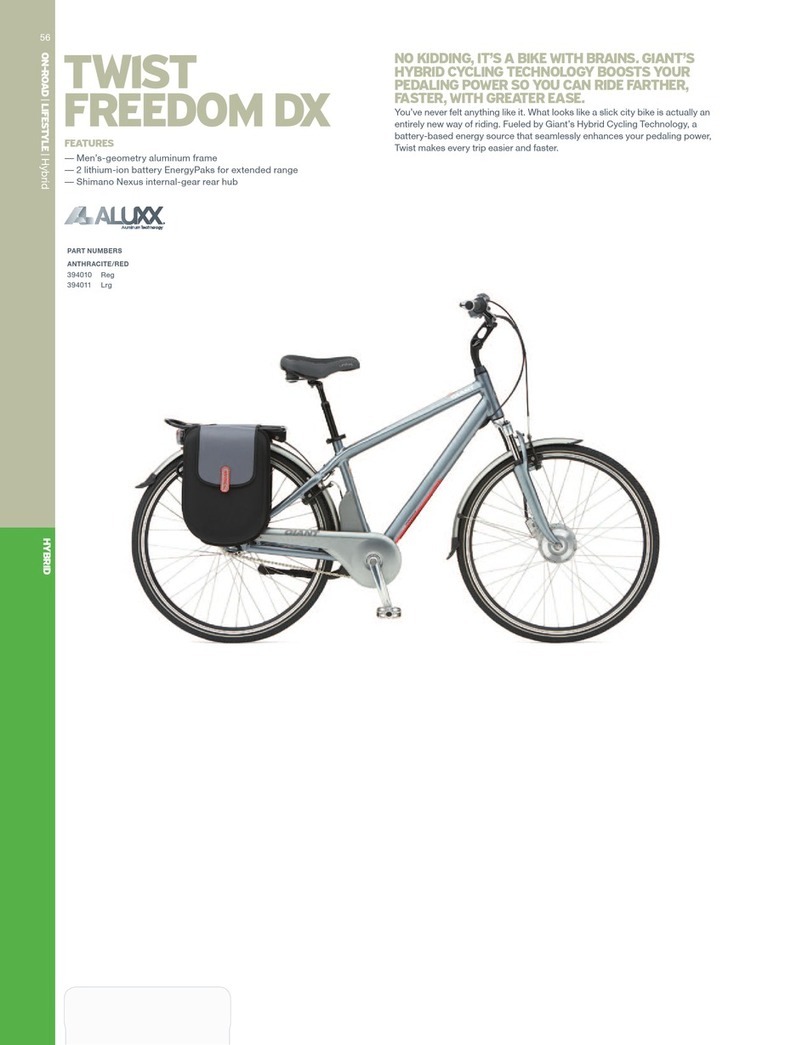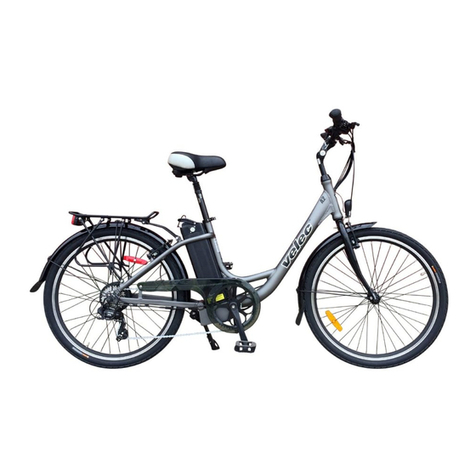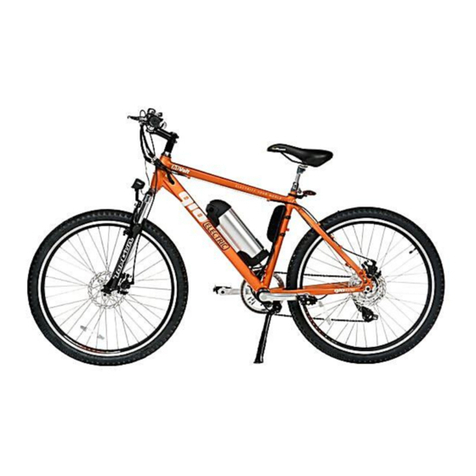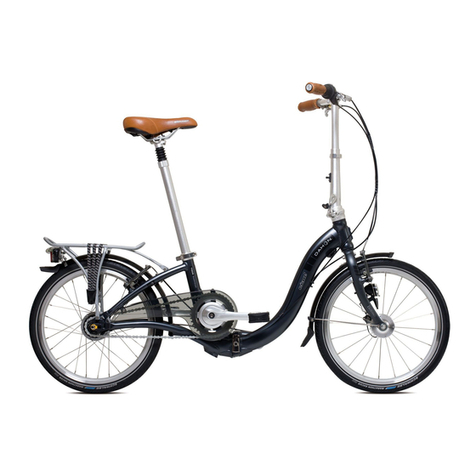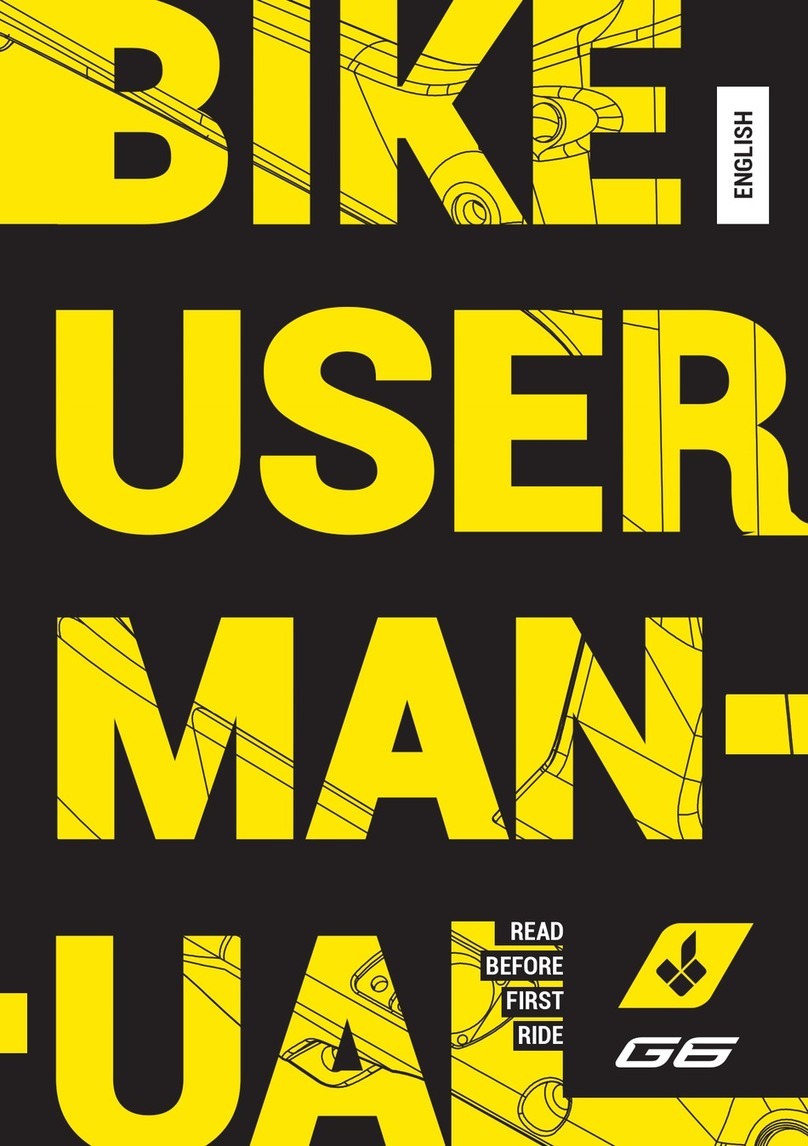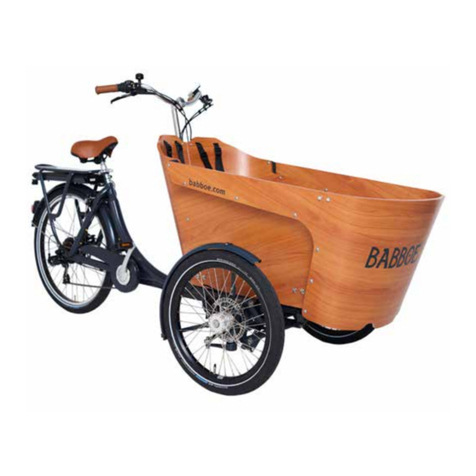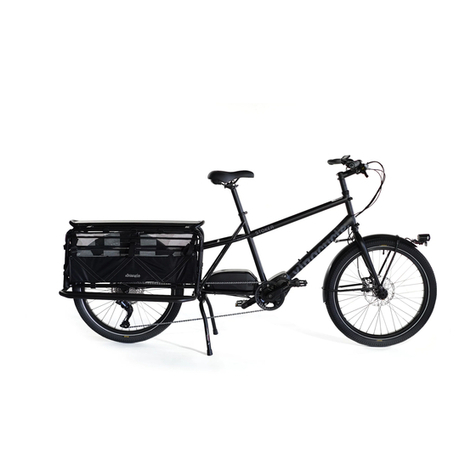7
5. Handlebar Components:
The throttle and display module need to be mounted to the handlebars. The installation procedure for
these parts may vary a little from bike to bike, but follow the guide below for a general overview.
The LCD module and key-pad would normally be fitted to the left side of the handlebars just to the right
of the grip. There is no need to remove the grip to fit the LCD, unless you want to rearrange the layout of
some of the other components that you may already have fitted to your handlebars. Simply remove the
two screws and then clip the LCD over the handlebars at the desired position, then re-fit the screw and
tighten to secure. It’s a similar process to secure the key-pad but there’s just a single screw.
To fit the thumb-throttle, you will need to slide the grip off the right side, loosen any of your existing com-
ponents such as the shifter, brake lever etc. and move them towards the centre a little, then slide the
throttle on and then tighten to secure it in the desired position.
Note: When fitting the throttle, you may need to replace your grips with the shorter ones supplied with
the kit if you are not able to move your existing components towards the centre a little.
Depending on the configuration of the bike, it may be more practical to mount the throttle and display in
slightly different locations or on opposite sides, you must decide which configuration suits your particular
case best.
The next step is to run the modular cable (for the LCD, throttle and optional brake cut-outs) from the
front of the bike back to the where the controller is going to be located, the location of the controller is
determined by the size of your triangle, on an 18 inch frame, you may have to mount the controller hous-
ing on the underside of the down tube. On larger frames, you can usually mount the housing on the front
face of the lower section of the seat tube. You can fit the controller in a different location if you wish, but
you must ensure that all of the cables from the various components will reach. Highlighted in RED below
are the possible routes for this cable and two possible locations for the controller.




